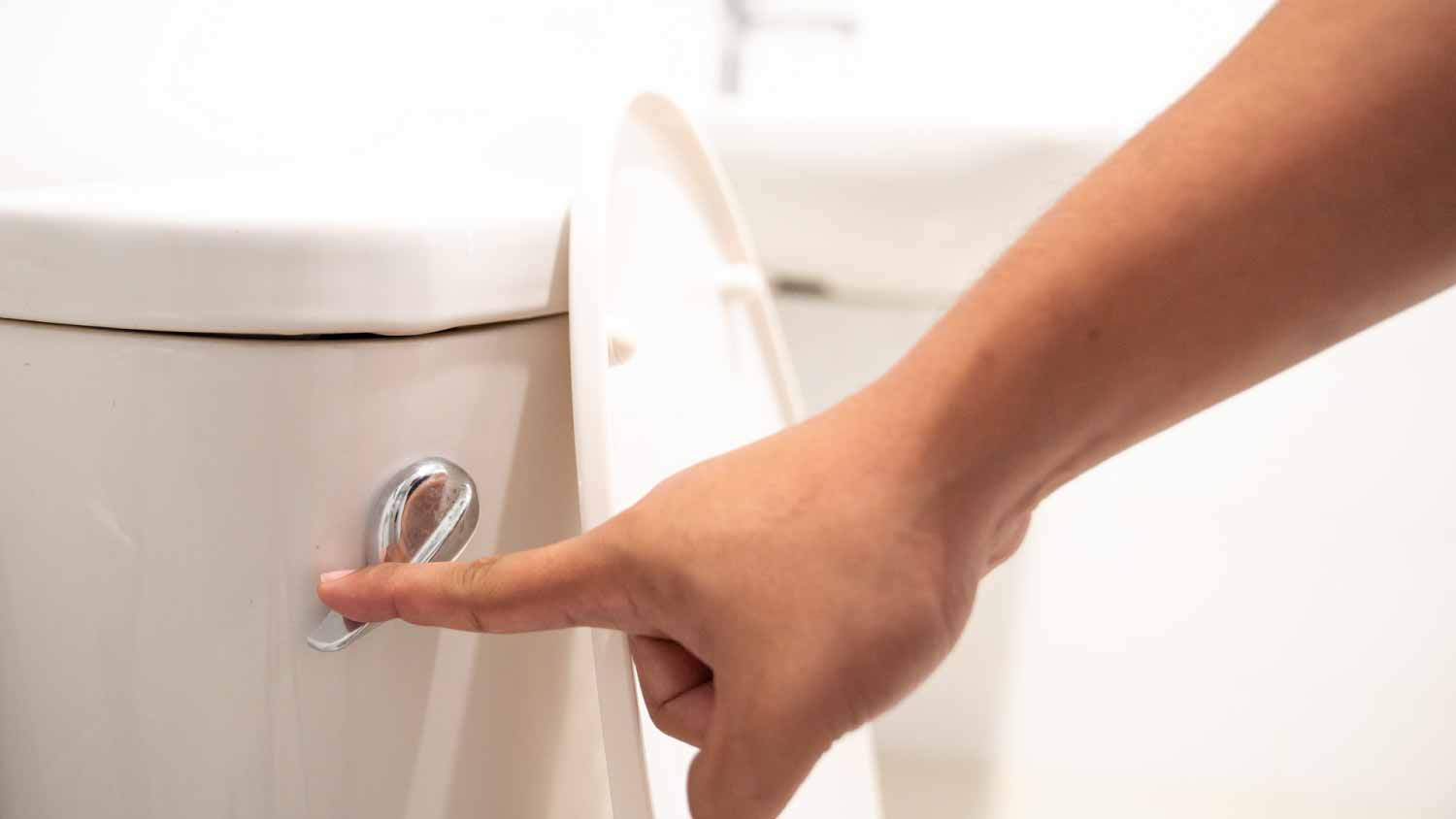Why Is My Toilet Bowl Sweating? 4 Reasons and How to Fix It
Your toilet may be sweating, but you don’t have to with these simple fixes


A sweating toilet bowl is usually caused by condensation, not leaks.
When warm, humid air meets the cool porcelain, it turns to water.
Fix this problem by lowering humidity and increasing ventilation.
Insulating your toilet or installing a low-flow toilet can help.
Hire a pro for any serious plumbing work.
You might be a little grossed out if you notice water dripping down the side of your toilet, but don’t fret. It’s typically just condensation from a perfect storm of temperature and humidity. There are a few factors that could contribute. If you’re asking yourself, “Why is my toilet bowl sweating?” this guide will give you the answer and discuss some fool-proof ways to fix it.
1. Warm, Humid Weather
Do you notice your toilet bowl sweating more during the summer months? This is from the temperature difference between warm air in your bathroom and the cold water in the tank. When the warm air hits the cold porcelain, it turns to water (a process known as condensation) and can drip down your toilet
The water that fills your toilet tank is about 50 to 60 degrees Fahrenheit, so your toilet may sweat whenever the outside air is higher.
How to Fix It
Using your air conditioning to cool and dehumidify the room on warm days can help, but you can also install a separate dehumidifier. Insulating your tank with a kit from a hardware store or replacing your toilet tank with an insulated tank can also help.
2. Hot Showers

Do you love a long, hot shower after a rough day? We get it. A very warm shower can increase the temperature and humidity in your bathroom—especially if you don’t have adequate ventilation. This can cause condensation on your toilet in the same way as hot, humid summer weather.
How to Fix It
Take shorter, cooler showers when possible. Always turn on your bathroom exhaust fan before you turn on the shower, and if necessary, crack a window or door to increase ventilation. The less humidity in the bathroom, the less condensation.
3. Low Ventilation
If your bathroom doesn’t have adequate ventilation, humidity will get trapped in your bathroom when you take a shower or bath. This can make your toilet sweat because it will increase the amount of condensation on your toilet bowl.
How to Fix It
You’ll need to increase the bathroom ventilation. There are a bunch of different ways to vent your bathroom. An exhaust fan is the most popular. The bonus is that venting won't just stop condensation—it also prevents mold growth and moisture damage.
4. Leaky Flapper

If your toilet flapper is working properly, it will only let water through after you flush your toilet. If your flapper doesn’t seal properly, cool water will continuously flow into the tank. This lowers the overall temperature of the water, which can make your toilet sweat.
How to Fix It
You can replace the toilet flapper to stop the condensation.
When to Call a Pro
Most homeowners can troubleshoot a sweating toilet on their own. You can try to increase ventilation and lower humidity in simple ways, like opening a window, running an exhaust fan, or turning on your air conditioner. If that doesn’t solve the issue, you’ll want to bring in a plumbing repair pro near you.
A professional plumber can solve the root cause of the problem—whether it’s a simple fix like a flapper replacement or a larger job like installing an exhaust fan or switching to a low-flow toilet.
How to Prevent a Sweating Toilet Bowl
Sweating toilet bowls are annoying, but they usually don’t cause serious damage. It’s the underlying humidity that could be an issue. You may want to install a drip tray underneath your toilet to protect your flooring. Here are a few ways you can prevent a sweating toilet bowl:
Install an exhaust fan or dehumidifier: Increasing ventilation while decreasing humidity is a win-win.
Install an anti-sweat valve: An anti-sweat valve will regulate the temperature of the water in the toilet tank. This prevents condensation when the room gets warm.
Install a low-flow toilet: Low-flow toilets can reduce condensation because less cold water flows into the tank.
Insulate your toilet tank: Most hardware stores sell toilet tank insulation kits, but you could also replace your tank with an insulated model.
Keep your bathroom cool: On warm days, use your air conditioner to keep your bathroom cool and dry.
Frequently Asked Questions
The best way to stop your toilet bowl from sweating is to increase ventilation and get rid of the humidity in your bathroom. You can do this in a number of ways. Sometimes, cracking a window or running your exhaust fan is enough. You can also run an air conditioner or install a dehumidifier
While a toilet dripping on the outside can be caused by condensation, a toilet that is constantly dripping on the inside is usually caused by a deteriorated flapper. This is one of the most common types of toilet leaks. As the flapper degrades, it won’t seal properly, and water will constantly leak into the toilet.
If you notice water leaking down the side of the bowl or tank and you don’t notice any cracks in the porcelain, the odds are that it’s condensation. If you notice water around the base of the toilet, this points to a leak. Check for loose bolts. A sewage odor may also indicate a broken toilet flange.





- Gas Plumbers
- Plumbing Repairs
- Sump Pump Installation
- Wood & Pellet Stove Repair
- Shower Repair
- Wood Stove Services
- Emergency Plumbers
- Fire Sprinkler Contractors
- Perc Test Companies
- Toilet Repair & Installation
- Boiler Repair
- Sewer Line Repair
- Faucet Repair
- Main Drain Camera Companies
- Foundation Drain Installation
- French Drains
- Bathtub Replacement
- Subcontractors
- Storm Drain Contractors
- Affordable Plumbing
- Plumbing & Heating Companies
- Bathroom Repair Services
- Sink Installation
- Commercial Plumber
- Barndominium Builders
- Water Line Repair
- Faucet Installation
- Water Line Installation
- Leak Detection










